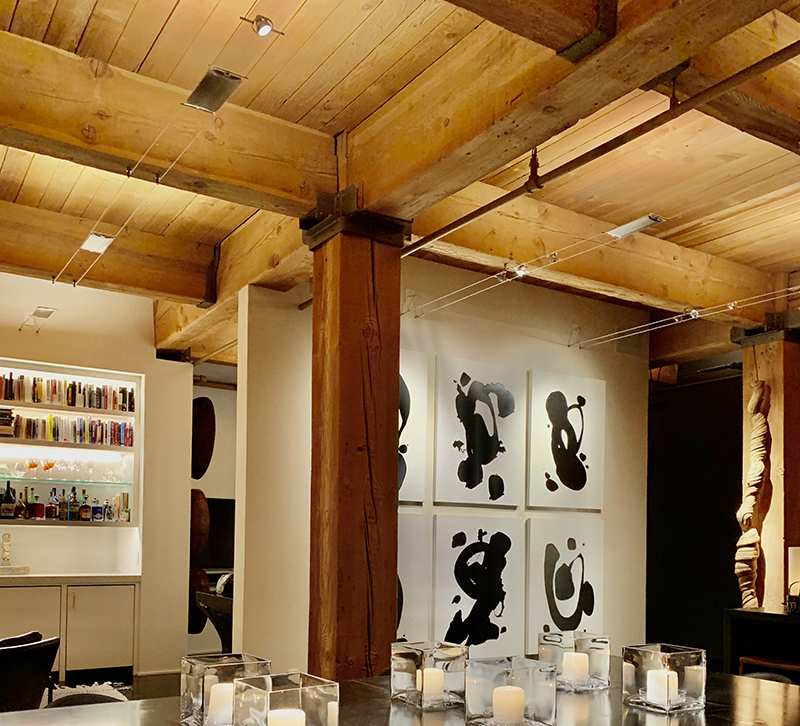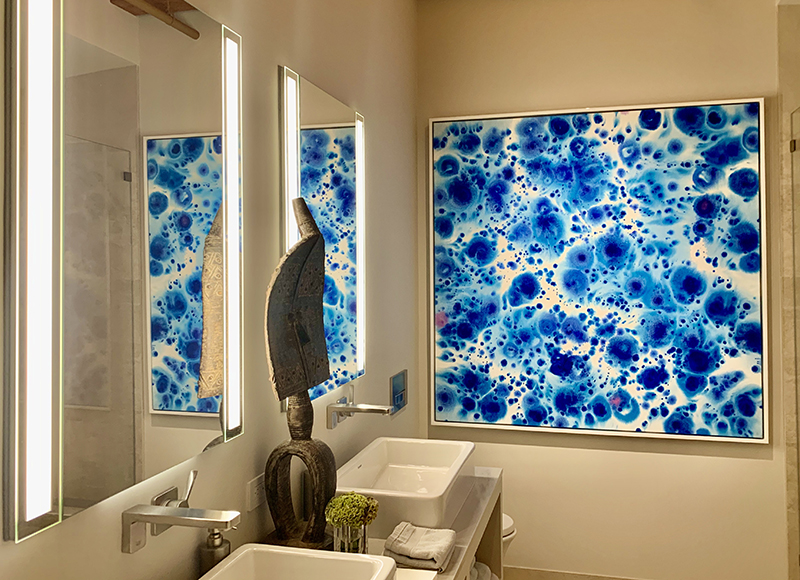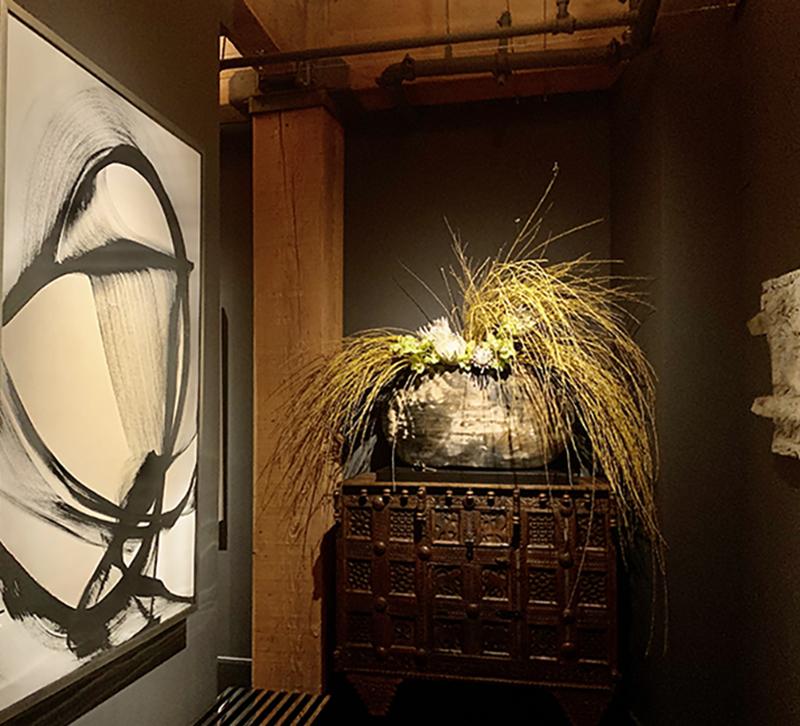As I have mentioned before, there are four functions of light — Task, Accent, Decorative and Ambient. Each one plays an important role in creating a cohesive lighting design. Here is an explanation of these various types of lighting:
Task- Lighting by which you do work; such as the under-cabinet lighting in the kitchen, lighting in the closet or a reading lamp.
Accent - Lighting used to highlight objects in a space. This adds depth and dimension to an environment. Recessed adjustable fixtures, track lights, portable uplights and directional landscape lights all fall into this category.
Decorative- These are what I like to call architectural jewelry. Their main purpose is to look pretty. They help add sparkle to a space. Chandeliers and candlestick-type wall sconces fall into this category. They should not be used as the work horses for lighting a room. When they are too bright they can visually overpower the other elements of the design.
Ambient- This is the gentle fill light for a room. It softens shadows on people’s faces and fills the volume of the space with a warm glow, as if the room were being filled with the light of a roaring fire. Ambient light comes from illumination that is bounced off the ceiling. Such sources as opaque wall sconces, torchieres, pendant hung indirect fixtures, and cove lighting can be used to create the ambient light.
Focus on the Accent
For the purposes of this blog post, I'd like to address accent lighting. It is the one function that I think gets overused. Too often, it is the only source of illumination, whether it comes from a track system, a cable system or a series of recessed adjustable fixtures. While this makes for a highly dramatic space, it is basically unusable for day-to-day living. This lighting issue is referred to as the museum effect, where every piece of art, tabletop and plant gets its own individual spotlight. It's a popular look that we often see in magazines which is why people try to emulate it. Yes, it is very showy for a print article or on a website, but it's not very useful for the people actually living in the space. It would be like living in a museum. This choice of lighting design plunges seating areas into darkness. Subconsciously, family and friends will feel that what you own is more important than the people you love and care about.
Accent lighting is just one of the components of a successful lighting design. It is not meant to be used as the sole source of illumination, other than in a gallery or museum setting. Even then, I recommend the addition of other sources of illumination, especially ambient lighting so that visitors do not get eye fatigue. How many times have you walked through a museum and you feel tired by the third room? That’s because your eye is moving from the bright light on the art to the dark wall spaces in between. A layer ambient light would lessen the contrast between the paintings and the wall, reducing eyestrain.
Achieving the Balance
Take a look at this newly renovated loft space. Four functions of light are expertly blended together to create an environment that is both inviting and dramatic. People can tell immediately when lighting is bad. But it’s very hard for them to put into words what good lighting looks like. That’s because well-done lighting is subtle. Bad lighting hits you in the eye, while good lighting gently caresses your face.

This loft-style condominium has a great balance of light. The different lighting functions blend together to create space that is warm and inviting, as well as a little bit dramatic. The suspended cable system offers both accent and ambient light for of the open plan living room and dining room areas. Small rectangular trays project light up towards the ceiling, showing off the massive beams and the warm tones of the wood. They create the ambient light which softens the shadowing on people’s faces, while providing an overall glow to the rooms. Adjustable accent lights, also mounted on the cables, project light toward art and sculpture. They help create dimension and keep the viewer’s eye moving around the room.

The same cable system continues throughout the loft space, including the bedroom and the master bath. This makes sure that there is a consistent source of ambient light to help unify the rooms. The table lamp off to the right creates a little island of illumination on top of the chest, while adding a bit of accent for the structural wood column.

In the bathroom, vertically mounted lights are inset into the wall above the vanity so they are flush with the mirror. These use a 90-CRI dimmable LED source which has tunable color. The color temperature goes from 5000 K (daylight) down to 2200 K (candlelight).This gives the owners the ability to see themselves in daylight or nighttime settings and even a relaxing/romantic environment. Even in this area, the cable system adds accent light and ambient light to the mix.
*All Photos from Randall Whitehead







